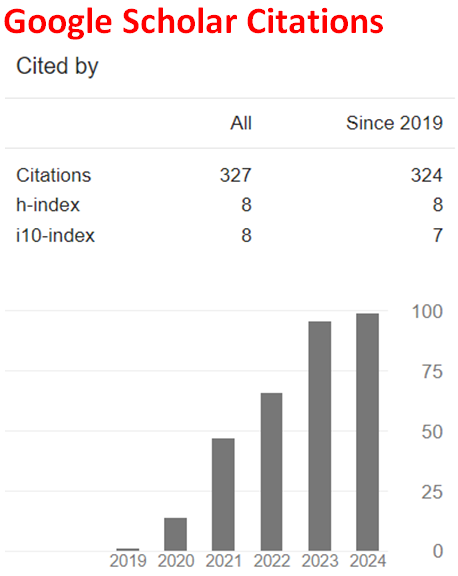A New Approach to the Chemistry of the Serullas Test for Morphine
Abstract
The tests for morphine are very important since this alkaloid is used in medicine for pain release but also it is a restricted drug due to abuse. The interaction of morphine with iodic acid has been used for its identification. In this communication the several redox reactions taking place during this test are explained in a new way. Activation of the organic-inorganic ester (mixed iodate) by protonation and water loosening creates a cationic intermediate with inverted polarity at the ortho-position. This innovation is important because there is no need to invoke electron back donation since this concept reverses the normal polarization of a functional group. Our novelty worked very well and explained the three successive redox steps taking place during the test, that is, until the oxidation to an ortho-quinone and iodine formation which is detected by reaction with starch gel giving Prussian blue colour.
Downloads
References
Sánchez-Viesca, F., & Gómez, R. (2022). The mechanism of the morphine-apomorphine rearrangement. American Journal of Chemistry, 12(4), 73-75. https://doi.org/10.5923/j.chemistry.20221204.02
Sánchez-Viesca, F., & Gómez, R. (2022). The mechanism of the oxido-degradation of the cinchona alkaloids. American Journal of Chemistry, 12(1), 18-21. https://doi.org/10.5923/10.5923/j.chemistry.20221201.03
Sánchez-Viesca, F., & Gómez, R. (2022). The chemistry of Heller’s test for urine indican detection. Magna Scientia Advanced Research and Reviews, 05(01), 025-029. https://doi.org/10.30574/msarr.2022.5.1.0038
Sánchez-Viesca, F., & Gómez, R. (2021). On the mechanism of the Caro synthesis of methylene blue. Earthline Journal of Chemical Sciences, 6(2), 209-214. https://doi.org/10.34198/ejcs.6221.209214
Sánchez-Viesca, F., & Gómez, R. (2021). The mechanism of the Davy test for strychnine. International Research Journal of Pure & Applied Chemistry, 22(10), 36-39. https://doi.org/10.9734/IRJPAC/2021/v22i1030438
Sánchez-Viesca, F., & Gómez, R. (2021). The chemistry of Crismer’s test for glucose in urine. Open Access Research Journal of Chemistry and Pharmacy, 01(02), 005-008. https://doi.org/10.53022/oarjcp.2021.1.2.0028
Waters, W. A. (1964). Mechanisms of oxidation of organic compounds (pp. 63, 93-95). London, England: Methuen.
Newkome, G. R., & Paudler, W. W. (1982). Contemporary heterocyclic chemistry (p.253). New York, USA: J. Wiley & Sons.
Serullas, G. (1830). De l’action mutuelle de l’acide iodique et de la morphine, ou de l’acetate de cette base. Annales de Chimie et de Physique, 43, 211-216.
Sánchez-Viesca, F., & Gómez, R. (2020). On the mechanism of the Serullas test for morphine. World Journal of Organic Chemistry, 8(1), 7-10. https://doi.org/10.12691/wjoc-8-1-3
Froehde, A. (1867). Sur la recherché de la morphine. Bulletin de la Societé Chimique de Paris, 8(1), 166.
Sánchez-Viesca, F., & Gómez, R. (2019). On the mechanism of the Froehde reaction. World Journal of Organic Chemistry, 7(1), 1-4. https://doi.org/10.12691/wjoc-7-1-1
Cohn, A. I. (1903). Tests and reagents (p. 326). New York, USA: J. Wiley & Sons.
Sánchez-Viesca, F., & Gómez, R. (2021). The chemistry of the Wellcome test for morphine. Open Access Research Journal of Chemistry and Pharmacy, 01(02), 001-004. https://doi.org/10.53022/oarjcp.2021.1.2.0025

This work is licensed under a Creative Commons Attribution 4.0 International License.


